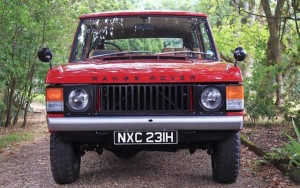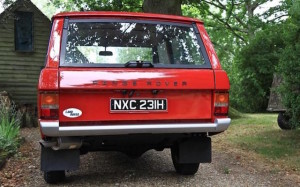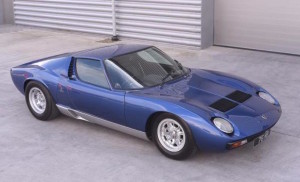
 Rocker Sir Rod Stewart’s 1971 Lamborghini Miura might have sold at auction in London for a record £909,000 (NZ$1.55m), but most interest centred on a 1970 Range Rover that went for £93,000 (NZ$165,000).
Rocker Sir Rod Stewart’s 1971 Lamborghini Miura might have sold at auction in London for a record £909,000 (NZ$1.55m), but most interest centred on a 1970 Range Rover that went for £93,000 (NZ$165,000).
Why? Because build number 26 was the first registered to Land Rover itself. The first 25 development Range Rovers didn’t carry the now-famous badge. Instead they were badged Velar and registered to a fictitious manufacturer outside of London.
Land Rover did so to hide the fact that it was about to launch an all-new four-wheel-drive that would open up a new market segment. Of the 25 Velar models, 20 were destined for the press launch in Cornwall in June 1970.
 The model sold by auction house Coys has the chassis number 35500026A, making it the first near-production model registered as a Range Rover. The only major change was to the bonnet, where the pre-production aluminium one was replaced by steel.
The model sold by auction house Coys has the chassis number 35500026A, making it the first near-production model registered as a Range Rover. The only major change was to the bonnet, where the pre-production aluminium one was replaced by steel.
After the press launch, 26A went back to Land Rover and stayed around the Solihull plant in the English Midlands until 1973, when it was sold to a company specialising in converting Range Rovers into ambulances.
But it was sold into private hands before the planned conversion and nothing much was known about it until it was tracked down in 1995 by a Range Rover collector, who later sold it to the auction vendor in 2000.

It carries the number plate NXC231H and has been meticulously restored. The vendor told Coys: “We believe NXC231H to be one of the best Range Rover Classics in existance.
“We were lucky enough to source new front seats, part of what sets this car apart from other restorations which fail to have the correct interior trim.”
The 1970 original two-door Range Rover Classic was in production until 1981, when the four-door Classic appeared. The second-generation model arrived in 1994, the third in 2002 and fourth in 2012.
